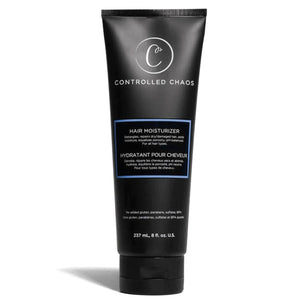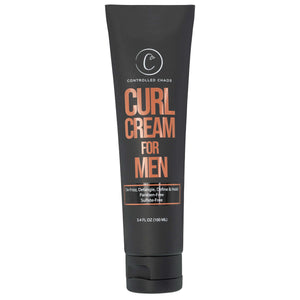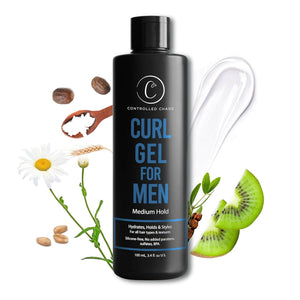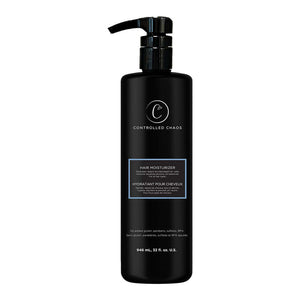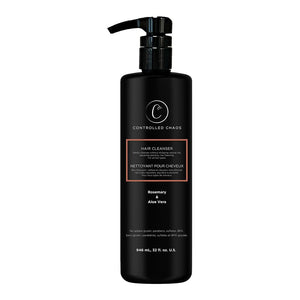

Curly hair comes in various types, each with unique characteristics. Type 3 curls are often admired for their bouncy, spiral-shaped strands. However, maintaining them can be challenging without understanding their particular needs. This blog will help you identify the types of curls. Also, we will guide you in selecting the best products to keep them healthy.
Type 3 curl characteristics
This curl type falls in the middle of the curly hair spectrum, between wavy (Type 2) and coily (Type 4) textures. This category is known for its distinct springy, S-shaped curls ranging from loose loops to tight spirals.
Subcategories:
These types of curls are further classified into three subcategories based on the curl pattern and texture:
- Type 3A:
- Features loose, well-defined curls.
- Hair is generally soft, with a natural shine and fine to medium texture.
- Prone to frizz in high humidity.
- Type 3B:
- Consists of tighter, more voluminous curls than 3A.
- Hair is medium to coarse in texture.
- It may require more moisture to prevent dryness.
- Type 3C:
- Known for tight corkscrew curls.
- Hair is densely packed, offering volume but prone to shrinkage.
- Requires intensive hydration and care to avoid brittleness.
Characteristics of Type 3 Curls
These are naturally full of personality but come with their own set of challenges:
- Dryness: The spiral shape makes it harder for natural oils to travel down the hair shaft, leading to dryness.
- Frizz: High humidity or lack of moisture can cause frizz.
- Tangles: The curls easily interlock, making detangling a delicate process.
- Shrinkage: The springy nature of curls causes them to appear shorter than their actual length.
What Do Type 3 Curls Need?
Here’s a breakdown of what they need:
- Hydration:
- Moisturizing shampoos and conditioners are essential to combat dryness.
- Look for products enriched with natural oils and humectants to lock in moisture.
- Curl Definition:
- Lightweight creams and gels help define the curl pattern.
- Products with a medium to firm hold are ideal for keeping curls in place.
- Frizz Control:
- Anti-frizz serums or leave-in conditioners can smooth the hair cuticle and prevent flyaways.
- Avoid alcohol-based products, as they can strip the hair of moisture.
- Deep Conditioning:
- Weekly deep conditioning treatments restore lost moisture and repair damage.
- Opt for masks rich in proteins and essential fatty acids.
- Gentle Detangling:
- Use wide-tooth combs or your fingers to detangle hair while it’s wet and conditioned.
- Apply detangling sprays or creams to minimize breakage.
- Heat Protection:
- Always apply a heat protectant spray to prevent damage if using heat tools.
- Air drying or diffusing is recommended to preserve the natural curl pattern.
Tips for Choosing the Best Products
Here are some of the tips you should look for while choosing these type 3 curls products:
-
Ingredient Awareness:
- Look for natural ingredients like shea butter, aloe vera, and argan oil.
- Avoid sulfates and silicones, as these can lead to buildup or dryness.
-
Customizable Solutions:
- Choose products tailored to your curl subtype (3A, 3B, or 3C).
- Lightweight formulas are best for finer curls, while heavier creams suit coarse textures.
-
Hydrating Formulas:
- Prioritize products with hydrating and sealing properties.
-
Eco-Friendly Choices:
- Consider biodegradable or environmentally friendly products to reduce your ecological footprint.
Common Challenges for Type 3 Curls and Solutions
Here are some common challenges and tips to overcome them:
1. Frizz Explosion in Humidity
Cause: Lack of moisture or porous hair that absorbs excess environmental humidity.
Solution:
- Use anti-humidity sprays or serums to shield the hair.
- Seal your curls with a nourishing oil or butter to lock in hydration.
- Avoid over-washing, as it strips the hair of natural oils.
2. Lack of Definition
Cause: Improper product application or insufficient hydration.
Solution:
- Apply curl-enhancing products section by section.
- Use the “praying hands” method or scrunch your curls.
- Incorporate a curl-defining gel into your routine for added hold and shape.
3. Breakage During Detangling
Cause: Overzealous brushing or lack of slip during detangling.
Solution:
- Always detangle when the hair is wet and conditioned.
- Use a wide-tooth comb or your fingers for gentler detangling.
- Work from the ends upward to minimize breakage.
4. Dryness and Dullness
Cause: Difficulty distributing natural oils along the spiral strands.
Solution:
- Deep condition weekly with a mask designed for curly hair.
- Use lightweight oils like argan or jojoba to add shine.
- Incorporate a leave-in conditioner for long-lasting moisture.
Mistakes to Avoid
Even with the best intentions, some habits can hinder the health of your curls. Avoid these common mistakes for Type 3 curls care:
-
Skipping Heat Protection:
- Heat tools can cause irreparable damage to curls. Always use a heat protectant before styling.
-
Overusing Products:
- Too much product can lead to buildup, weighing down curls, and reducing volume. Start with small amounts and build up as needed.
-
Frequent Washing:
- Too often, washing strips natural oils, leaving curls dry. Aim to wash 1–3 times per week.
-
Brushing Dry Hair:
- Brushing curls when dry disrupts their pattern and leads to frizz. Always detangle when wet and conditioned.
-
Neglecting the Scalp:
- A healthy scalp is the foundation for healthy curls. To stimulate growth, use gentle, sulfate-free shampoos and massage the scalp during cleansing.
Conclusion
Type 3 curls are a stunning blend of versatility and texture, offering endless styling possibilities. Whether you choose to wear your curls natural or voluminous, it is essential to understand their unique needs. Investing in the right products, maintaining a consistent routine, and adopting curl-friendly habits allows you to enjoy manageable curls.
Faqs
What is a type 3 curl?
These spiral-shaped curls range from loose loops to tight corkscrews. They are naturally voluminous but, due to their structure, are prone to dryness and frizz.
How to keep 3A hair from frizzing?
To prevent frizz in 3A hair, use hydrating shampoos and conditioners, followed by anti-frizz serums or leave-in conditioners. Avoid touching your hair while it dries, and opt for a satin pillowcase at night.
How to care for type 3 curls?
These curls need regular hydration, gentle detangling, and curl-defining products. For minimal damage, incorporate deep conditioning treatments weekly and use styling tools like diffusers and wide-tooth combs.
How do I know if I have type 3 curls?
You likely have these curls if your hair forms defined, springy S-shaped curls or corkscrews. These strands are bouncy and full of volume but tend to frizz easily.
What are the characteristics of type 3 curls?
These curls are defined by their spiral shapes, natural bounce, and voluminous look. They range from soft, loose curls to tighter, coiled patterns. They are also often prone to dryness and tangling.
How do I care for type 3 curls?
Care for these curls by washing with sulfate-free shampoos, conditioning regularly, and applying curl-enhancing creams or gels. Use a satin or silk bonnet at night to prevent frizz and tangles.
What products are best for type 3 curls?
Hydrating shampoos, curl creams, and anti-frizz serums are ideal for this curl type. Look for products with natural oils, proteins, and humectants to maintain moisture.
How do I define type 3 curls?
To define these curls, apply a curl cream or gel to wet hair, then scrunch gently. Diffuse or air-dry to preserve the shape and avoid frizz.
How do I protect my type 3 curls from humidity?
Protect these curls from humidity using anti-humidity sprays or sealing them with lightweight oils. Start with a leave-in conditioner to hydrate the hair and create a barrier against moisture.


